The first couple years after I moved to Central Oregon (which felt like a frozen tundra after 15 years of living in Southern California), I experimented with growing strawberries. I knew there were hardy varieties but I didn’t know exactly which varieties would do best in my new garden, and so… I grew them all.
I had Junebearing, everbearing, and day-neutral strawberries (many dozens of plants attempted over two years) and most of them were lackluster in both size and production. (The ones that still had flowers after our late spring freezes, anyway.)
What I realized after several disappointments was that all strawberries were not equal—and I was often growing the wrong type of strawberry altogether! Here’s what I learned so you can avoid the same mistakes that I made.
Disclosure: If you shop from my article or make a purchase through one of my links, I may receive commissions on some of the products I recommend.
Understanding strawberry types
When I say “types,” I don’t mean varieties (I’ll get into those later). I’m talking about the three main types that strawberries are categorized as:
- Junebearing (also known as short day)
- Everbearing (also known as long day)
- Day-neutral
Short-day strawberries initiate flower production when day length is 10 hours or less, and switch to runner production once day length and temperatures increase. Long-day strawberries initiate flowers when day length reaches 12 hours, and day-neutral strawberries are not sensitive at all to day length—they’ll flower over a range of light periods.
While all of these types can generally be grown the same way as far as soil, light, and water are concerned, they have distinct differences in how often they bear fruit. Understanding these differences can help you choose the best varieties (cultivars) for your garden and maximize your fruit production each year.
Junebearing strawberries
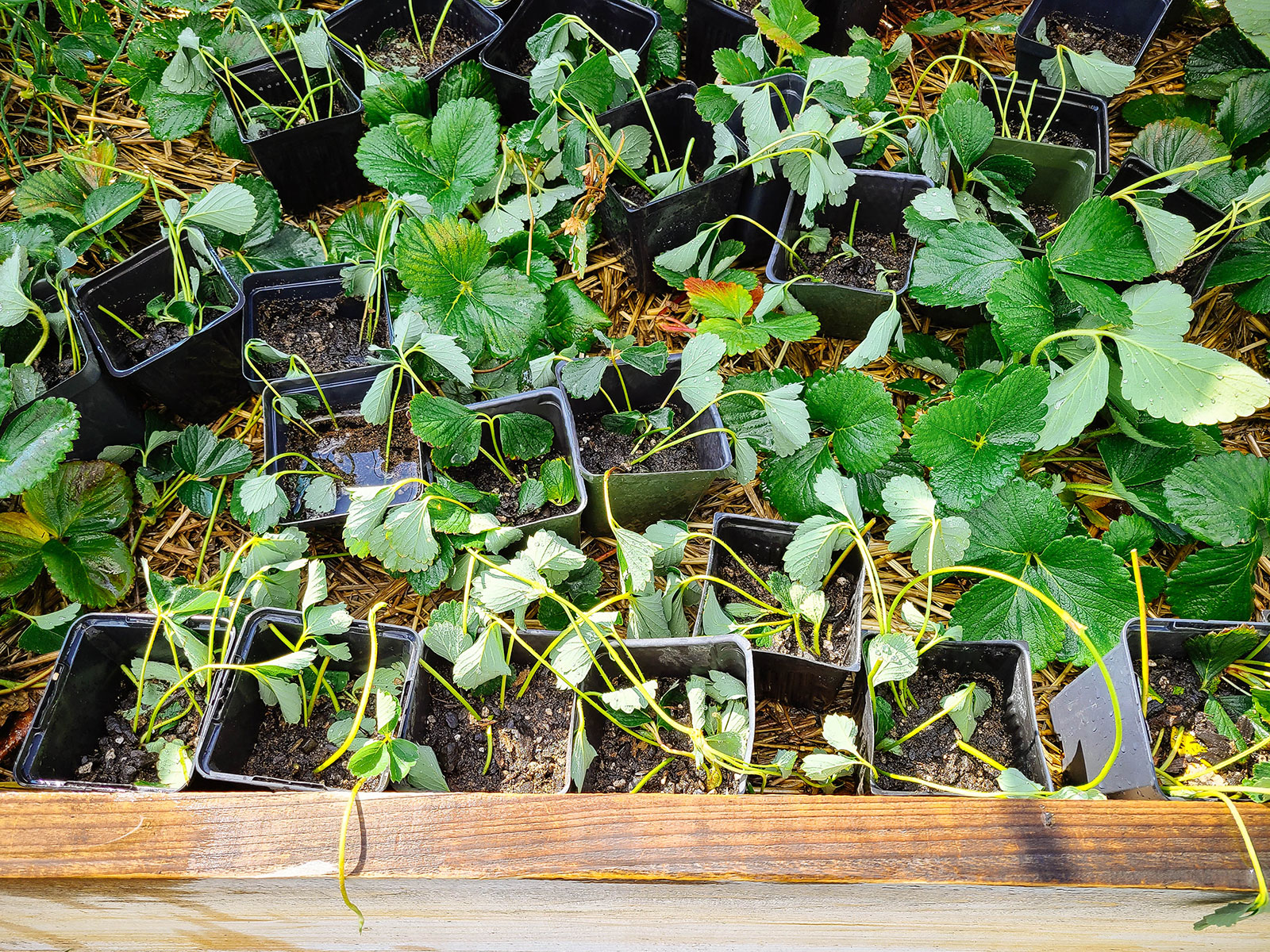
Junebearers (sometimes also called spring-bearers) produce one large crop per year in spring to early summer. This is typically in June (hence the name) but can be as late as July in some areas.
The fruiting season usually lasts two to four weeks, and Junebearing types tend to produce those big juicy berries we dream about. But it’s delayed gratification at its finest; the plants typically don’t produce a good harvest until the next year after planting.
In mild climates (USDA zones 7 and above), Junebearing strawberries can be planted in late fall when the short day length spurs flower bud formation. The flowers begin to open once temperatures warm up in mid to late winter, then bear fruit from early spring to early summer. Fall planting is the ideal scenario for Junebearing types.
If you live in a colder climate, you can also plant Junebearers once the soil is workable in spring (usually six weeks before your last frost date). The only caveat is that it’s best practice to remove all the blossoms that form that first year, so your plants have time to establish roots before they fruit during their second year.
Junebearing strawberries have lots of runners, so they’re well suited to a matted row planting system and propagating daughter plants from mother plants. (I talk more about proper strawberry spacing in this guide.)
Everbearing strawberries
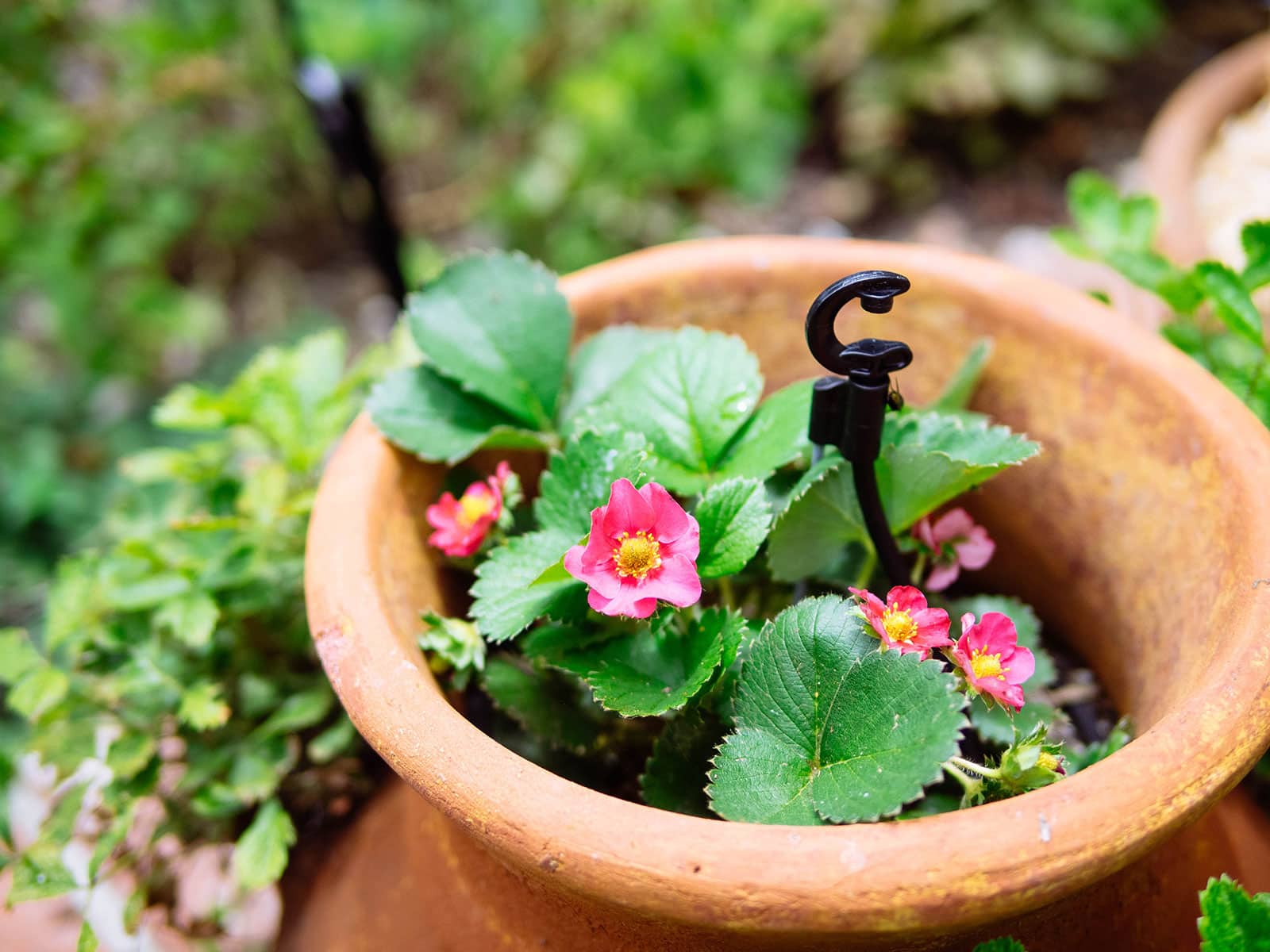
With everbearing strawberries, you’ll get two crops per year: one in June (give or take a couple weeks), and another in late summer.
You can plant everbearers in spring and they’ll produce a late summer harvest the same year they’re planted. Like day-neutrals, everbearers are affected by air temperatures and struggle to flower and fruit consistently above 90°F. (There are exceptions, however, like the ‘Eversweet’ cultivar, which can tolerate temps above 100°F with no loss of fruit quality).
Compared to Junebearing strawberries, everbearing types have much fewer runners. While this helps keep your strawberry patch more manageable, it also means you won’t be able to propagate lots of new plants from the mother plants. Everbearers are best grown using a hill system or spaced row system.
If given a choice between this type or day-neutral strawberries, however, I’d go for the latter. Everbearers just aren’t as productive (since they don’t fruit all season long) and the berries tend to be on the smaller side.
Day-neutral strawberries
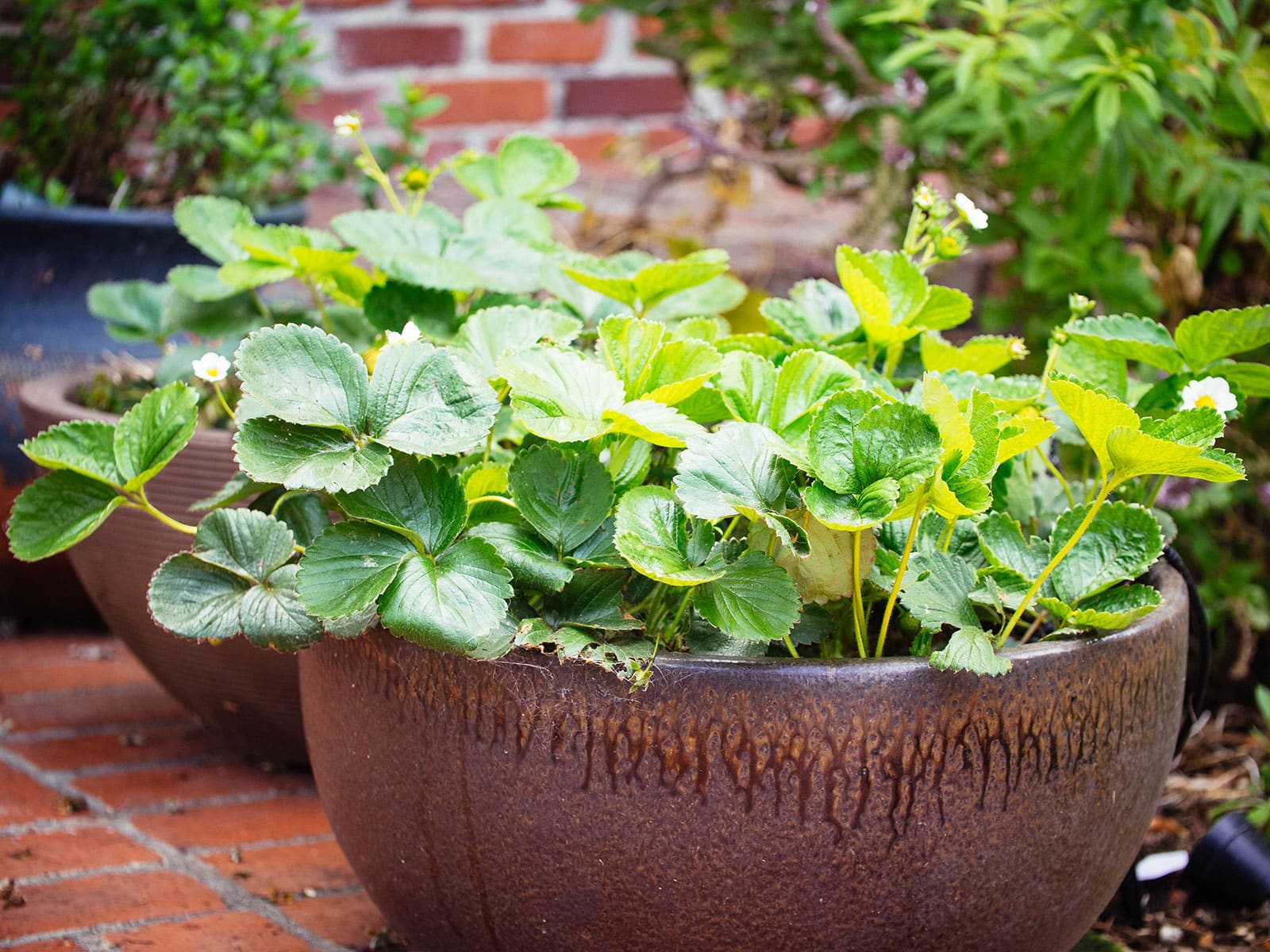
I have to clear one thing up first: Some nurseries label day-neutral strawberries as everbearing strawberries, or lump day-neutral cultivars together with everbearing types. But you should know the difference if you want to get the most berries possible from your plants!
Day-neutrals are so-called because they produce flowers and fruits throughout the growing season as long as temperatures stay above 40°F and below 90°F. Some agricultural experts even suggest that flower bud formation starts declining above 70°F, but most gardens can mitigate that by providing shade during the hottest part of summer.
It might seem weird that a summertime fruit won’t bear fruit when it’s hot out, but excessive heat can damage fruit and runner production. (I use a shade cloth like this one, which I also put over tender leafy greens to keep them from bolting too early.)
In most areas, the growing season for day-neutral types runs from May to October (or until a hard frost puts them into dormancy), and they continue to set and ripen strawberries all summer long. The plants bear fruit the first year they’re planted, but produce fewer runners compared to Junebearing types. Because of all this, they’re a great choice for container growing if you have a small space.
I typically pinch off the very first flush of flowers on new plants so they can spend that initial energy developing roots, then enjoy strawberries for the rest of the year.
Where to buy
Strawberry plants
Why does the type matter?
It matters most for people who have late spring frosts or very hot summers.
If you tend to get late freezes or unpredictable spring weather, you’ll want to avoid Junebearing and everbearing types because you could lose all your flowers to frost. (It’s happened to me!) Remember that with these particular strawberry types, you only get one or two crops per year—so it’s just not worth taking the chance with weather.
On the flip side, hot climates like Arizona and Texas have the most success with Junebearing types. These types of strawberries can be grown through fall and winter, and harvested before the arrival of searing weather (which—in parts of Texas, for example—may happen as early as April).
This is not to say that a cold climate can’t plant Junebearing types or a hot climate can’t plant everbearing types ever. If you can grow them in a more controlled environment like a greenhouse, then you have many more options.
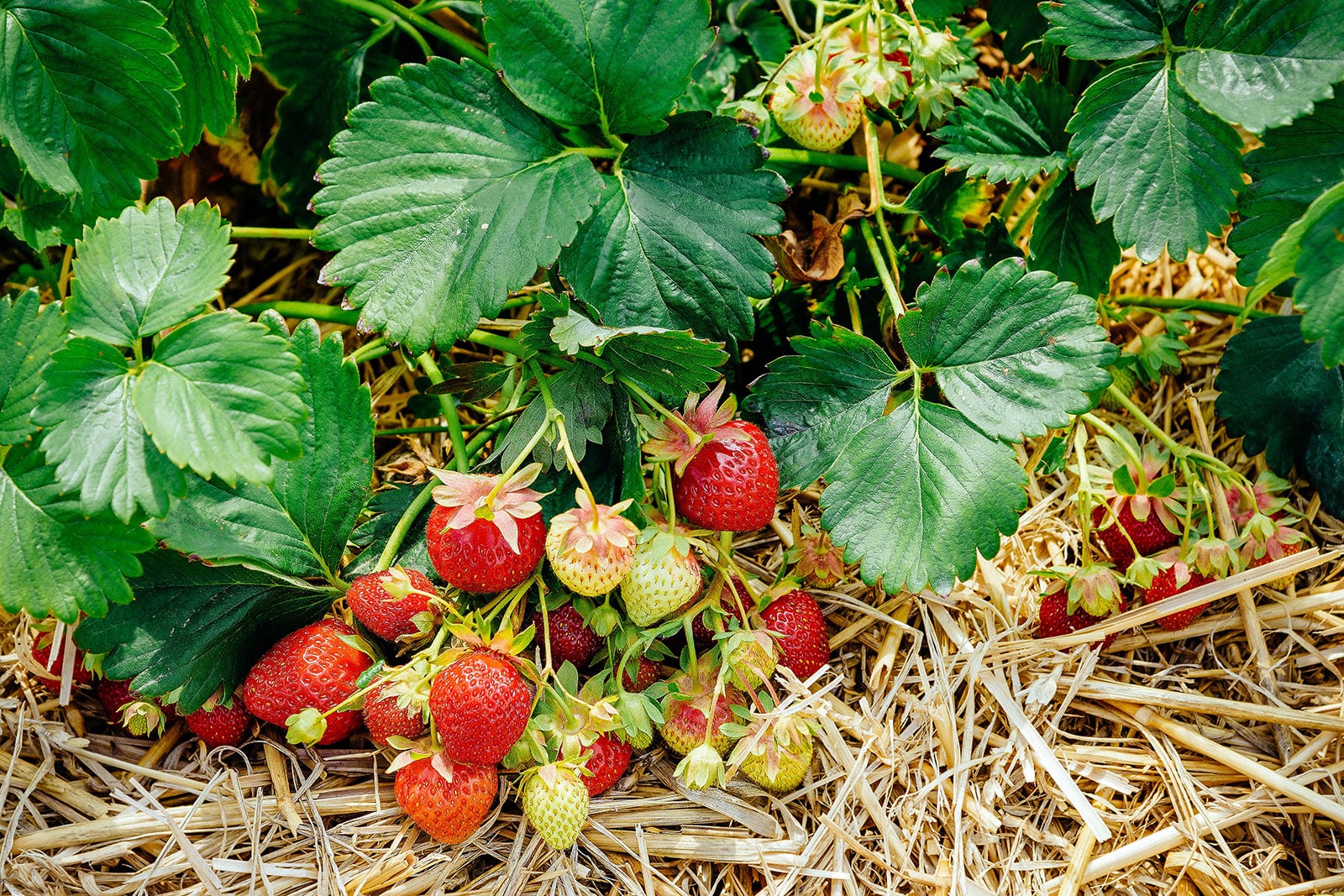
Choosing the right strawberry cultivars
Within each strawberry type, you’ll find several cultivars that are adapted to specific climates and vary in flavor, fruit size, plant longevity, and pest and disease tolerance. Among the Junebearing cultivars, there will also be early season, midseason, and late season strawberries, each group ripening within a few days of one another.
Since the plants are perennials, you’ll want to make sure you choose an appropriately cold-hardy cultivar for your microclimate. Just because it’s supposed to do well in zone 6 doesn’t mean it’ll do well in your zone 6 garden.
Before heading to the garden center or ordering your plants, be sure to note the names of the cultivars so you know exactly what type of strawberry you’re getting.
Junebearers
- AC Valley Sunset (Zones 4 to 7)
- AC Wendy (Zones 3 to 8)
- Allstar (Zones 4 to 8)
- Annapolis (Zones 3 to 8)
- Archer (Zones 4 to 8)
- Benton (Zones 6 to 9)
- Cabot (Zones 4 to 8)
- Camarosa (Zones 4 to 9)
- Chandler (Zones 5 to 9)
- Dickens (Zones 4 to 8)
- Earliglow (Zones 4 to 8)
- Galletta (Zones 4 to 7)
- Holiday (Zones 5 to 9)
- Honeoye (Zones 3 to 8)
- Hood (Zones 6 to 9)
- Jewel (Zones 4 to 8)
- Marshall (Zone 5 to 9)
- Mary’s Peak (Zones 6 to 9)
- Puget Reliance (Zones 3 to 9)
- Puget Summer (Zones 3 to 9)
- Shuksan (Zones 4 to 9)
- Sweet Charlie (Zones 5 to 9)
- Sweet Sunrise (Zones 6 to 9)
- Tillamook (Zone 5 to 8)
- Totem (Zones 4 to 10)
Everbearers
- Eclair (Zones 4 to 9)
- Elan (Zones 5 to 8)
- Fort Laramie (Zones 3 to 7)
- Montana (Zones 3 to 8)
- Quinalt (Zones 4 to 9)
- Ruby Ann (Zones 3 to 8)
- Summer Breeze Deep Rose (Zones 5 to 8)
- Sweet Kiss (Zones 5 to 8)
- Tristan (Zones 4 to 8)
Day-neutrals
- Albion (Zones 4 to 8)
- Alpine strawberries, various cultivars (Zones 3 to 10)
- Cabrillo (Zones 4 to 8)
- Charlotte (Zones 3 to 8)
- Delizz (Zones 3 to 8)
- Eversweet (Zones 5 to 8)
- Evie II (Zones 4 to 8)
- Mara des Bois (Zones 4 to 8)
- Monterey (Zones 4 to 8)
- Ozark Beauty (Zones 3 to 9)
- Pineberry (Zones 4 to 9)
- Portola (Zones 4 to 8)
- San Andreas (Zones 4 to 8)
- Seascape (Zones 4 to 8)
- Sweet Ann (Zones 4 to 8)
- Toscana (Zones 4 to 9)
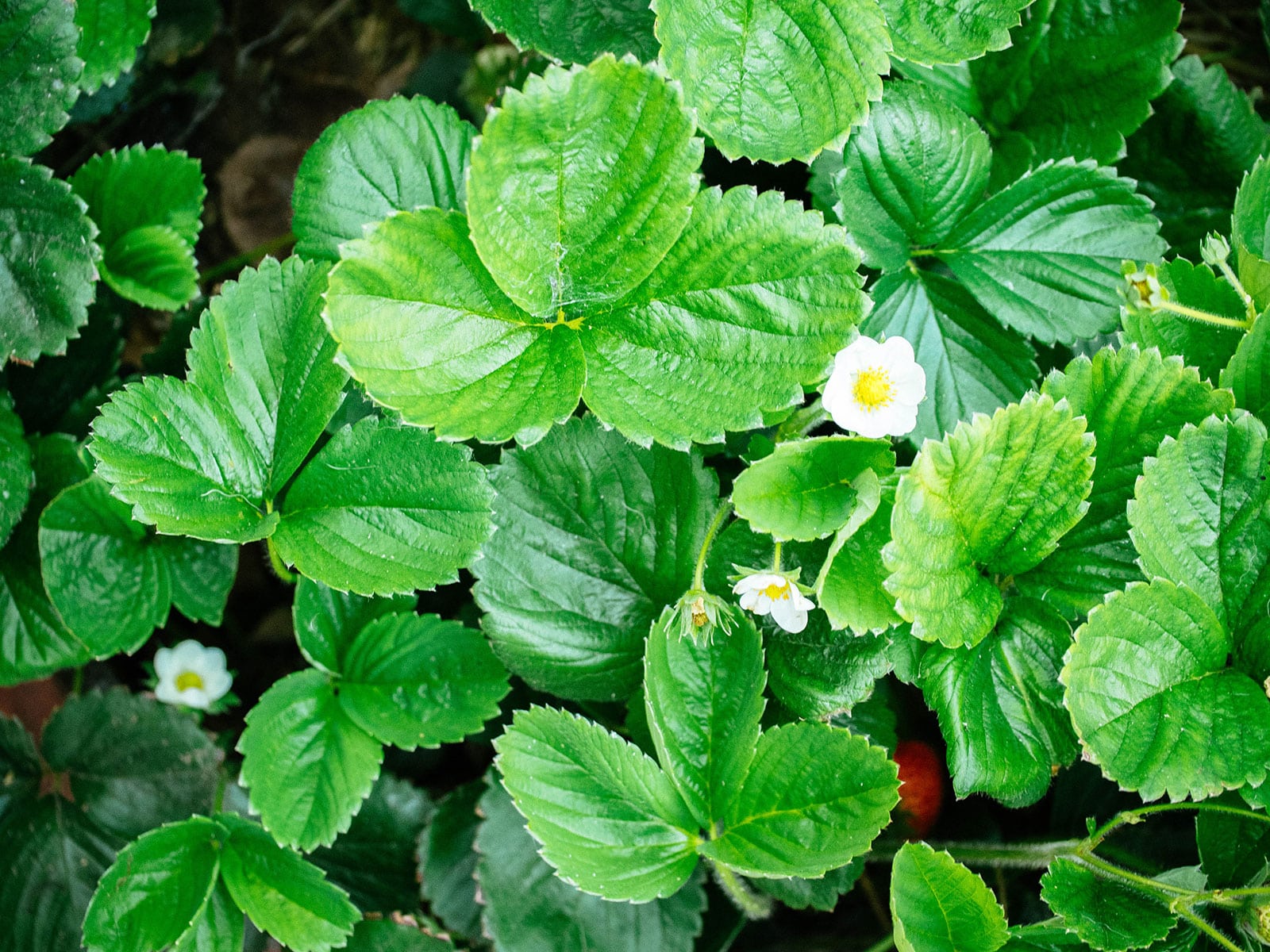
The best strawberry variety
In my opinion, after having grown nearly a dozen cultivars from the lists above, the best all-around strawberry variety is a four-way tie between Charlotte, Eversweet, Seascape, and Albion.
I grow all four of these in my own garden (started from bare-root strawberry plants) and prefer day-neutrals because I like having a continuous crop. In my experience, their berries also tend to be larger than everbearing types (with the exception of alpine strawberries, which naturally grow small).
Sure, the harvest each time isn’t as big as what I used to get from my Junebearers in California, but I’ll happily trade a large once-a-year harvest for a smaller (and steady) supply from spring through fall.
If these cultivars can flourish in your climate (they’re actually pretty versatile), I highly recommend them for these reasons:
- Charlotte is often noted in plant catalogs for having the best flavor, and I agree—it’s intensely fragrant and sweet.
- Eversweet definitely lives up to its name and produces huge berries, even when we get a week or two of temps above 95°F every summer. (I plant these in full sun with zero shade.)
- Seascape is highly productive with large, sweet red fruit and excellent flavor.
- Albion has firmer berries than Seascape, which makes them better for storing in the fridge.
That said, it’s best to grow a mix of different varieties from the same strawberry type, as they will bloom and fruit at different times, giving you a longer harvest period. Certain varieties have characteristics you might also want for your garden, such as disease resistance.
So, experiment with growing new strawberry cultivars each year until you find the ones you really love!


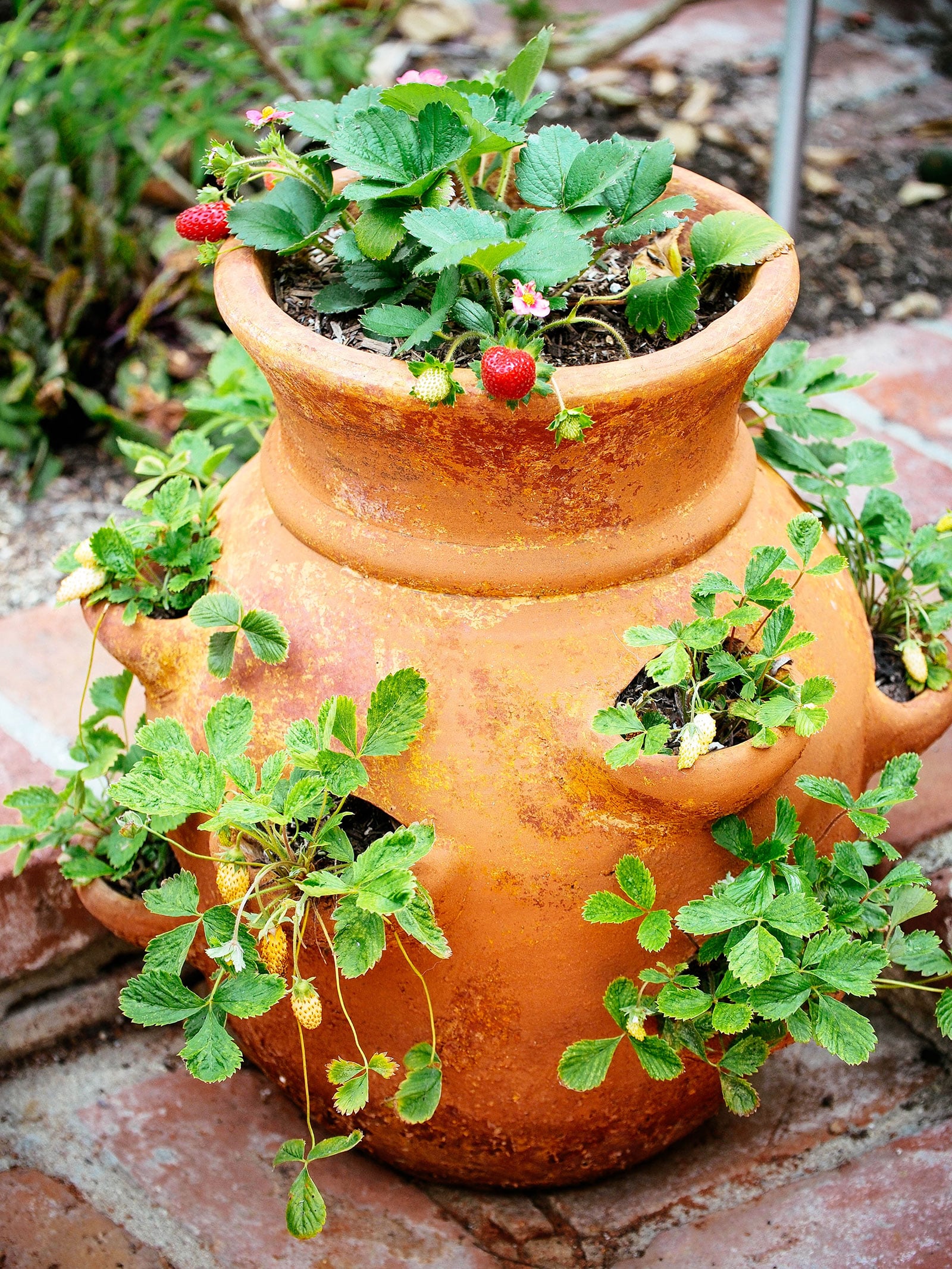













Is there a certain type of straw to use when planting strawberries?